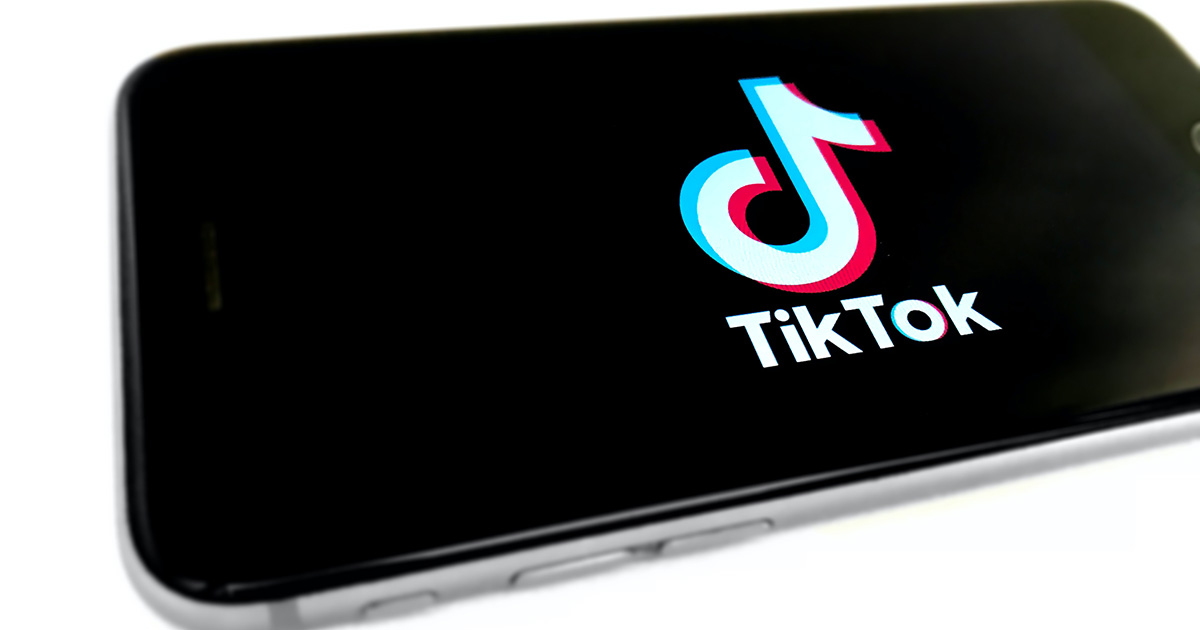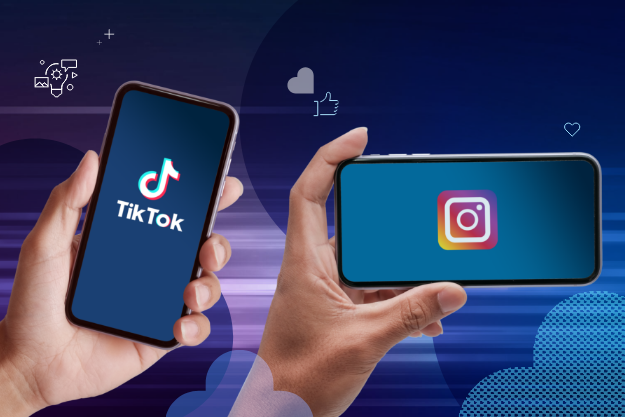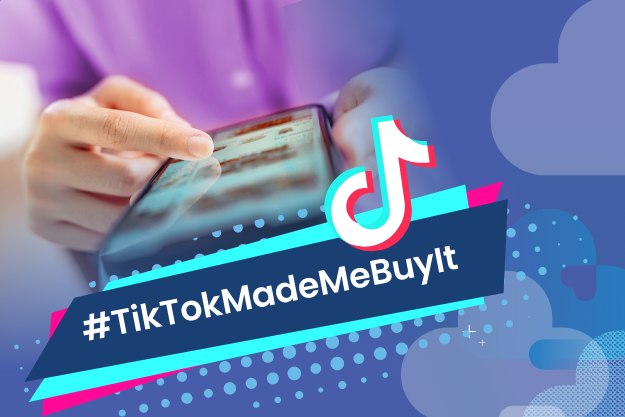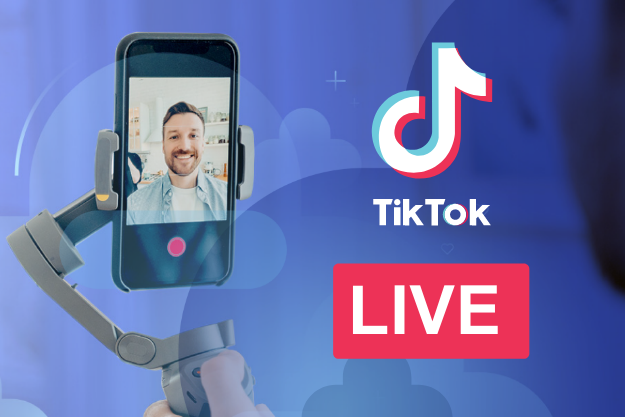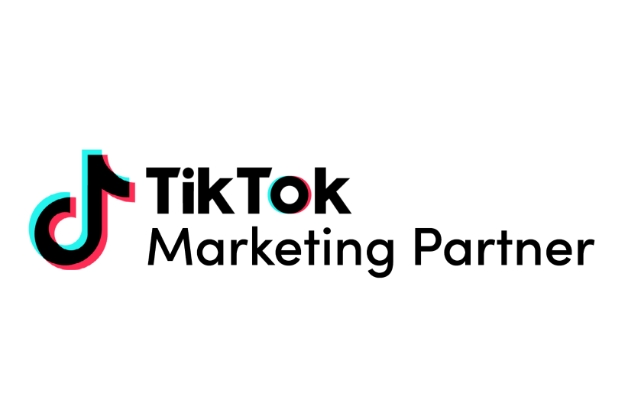TikTok is a social media platform to be reckoned with, having taken the world by storm over the last few years. More and more business-savvy organizations are jumping onto the TikTok bandwagon, using the platform to reach an expanding audience.
Let’s take a look at how you can use TikTok’s content algorithms to your advantage to get even more out of your mobile marketing campaign.
What Is the TikTok Algorithm?
The algorithm for ByteDance’s platform is one of the few that has been unveiled, as the Chinese tech giant’s app climbs the ranks of most used social media platforms. The app prioritizes who sees what based on three criteria:
User interaction
Video information
Account or device setting
Of course, hitting the right notes with the right video at the right time is tough. Virality isn’t ever a certain thing, but following these tips will help you in growing your online presence, building your brand on social media, and nailing your TikTok campaign.
TikTok video length
The average video on TikTok is just 16 seconds long. Any more than that, and the video sees a dramatic cut-off in engagement. A lot of businesses don’t notice this, and you’ll see a 30-second ad halfway through your scrolling.
Longer videos decrease the likelihood TikTok users will watch the whole video, which will have a huge effect on your potential growth.
Remember that first criteria, user interaction? It also measures video completion rate – or how often your video is watched all the way through – and puts a lot of weight behind it, too. It is possibly the most weighted criteria in TikTok’s entire algorithm.
That means that when people watch your video all the way through, it’ll get shown to more people. But if they’re clicking away early? That will limit your reach.
What does this mean for your marketing campaign?
Firstly, it means sticking that 30-second Facebook video up on TikTok won’t do you any favors – neither will that set of five six-second Instagram story slides. TikTok has its own playbook, and treating the various platforms as interchangeable will reduce the effectiveness of each one.
You wouldn’t market your product to small businesses in the same way as you would large ones, right? Neither should you create catch-all content for your marketing campaign.
Secondly, because you’re working to a much smaller time frame, it really rewards inventive storytelling and marketing. While that sweet sixteen is the golden spot for video runtime, users may still swipe away after a second or two. You need to be grabbing their attention as soon as possible – if not, they’ll simply move on.
Lastly, when you create effective content for a specific platform, you’re showing your users that you really get their platform. You’re connecting with them on their own turf – and while everyone knows the benefit of relevant advertising on social media, it’s often overlooked that video length and subject are just as important as where you put them.
So short, sweet, and snappy. That’s how to structure and how to use TikTok for your business.

Know your TikTok audience
We’ve talked about how to build your videos. But if your business sells, say, unified communications software and you’re marketing it towards coffee shops in Shoreditch, then you’ll get nowhere at all.
The second criteria of TikTok’s algorithm states that videos are ‘grouped’ by similar factors, so that users are fed content that’s similar to what they often watch. Tapping into that grouping lets you not only talk to your established audience, but also an audience you might not have thought about yet.
Identifying your audience is not only a huge step in having an effective marketing campaign, it’s also intrinsic to how TikTok’s algorithm works. Given that the platform actively pushes content that the user might like, having a thumb on the pulse of who you want watching your ads lets you target those like-minded users.
And this doesn’t just apply to what they watch. Similar hashtags and sound bites are just as important to the algorithm as the video itself. In fact, there’s one thing that has given rise to TikTok’s unique brand of promotion – challenges. Let’s explore this unusual and potentially powerful form of viral marketing.
#TikTokChallenges
Challenges are a great way for organizations to engage and promote themselves on TikTok, essentially having users build content for them as they partake in special tasks. A great example of this is Colgate’s #MakeMomSmile challenge for Mother’s Day.
The titans of toothpaste asked their audience to record their mom flashing a smile and post with the hashtag, spreading the Mother’s Day love. And it worked – the hashtag has been viewed over 5 billion times.
@zahra look how beautiful my momma is :’) #MakeMomSmile @colgate_us #ColgatePartner ♬ Children Folk Acoustic - BDKSonic
Work with TikTok influencers who have mastered this mechanic, using challenges to get their users engaging and interacting. And when you have an engaged audience, it’s easy to send them to your other sites and platforms, creating fantastic opportunities for affiliate marketing possibilities.
Challenges are common, and not all of them work of course. But when they do, they’re essentially a powerful favorable review from your audience, making for excellent customer engagement further down the road.
Go local, aim global
We’ve covered the first two points of TikTok’s algorithm, and how you can use them to improve your marketing campaign. The third point is less to do with you and more to do with the user, but let’s cover it anyway and see what can be learned.
Although not nearly as heavily weighted as the first two points, TikTok takes the user’s account and device settings into consideration, prioritizing videos from nearby and of the same language.
How can you use this to your advantage? Well, although your short, sharp video ad with relevant hashtags and a catchy sound bite will take over the world soon, it has to start somewhere. And with TikTok’s algorithm, it’s more likely to start local.
Identifying local trends (and different locations will definitely have different local trends, meaning that you can tap into a resource not available elsewhere) will give your ad campaign a kickstart which can send it global.
Once your ad has been viewed once, the algorithm starts to work. And from there it spreads, and soon your international audience is engaging along with your local one. It worked for brands that rule TikTok, and it can work for you.
Don’t limit yourself to TikTok
This might be a somewhat conflicting message to give you, when we’re talking about using TikTok’s algorithm to good effect. But it’s worth noting.
More and more these days, heavy social media users expect to see an organisation across Facebook, Instagram, Twitter, Snapchat, and whatever new thing pops up. In fact, most people will, upon coming across your brand for the first time, check out your social media pages before they ever get to your website.
Successfully managing a multi-channel approach to your marketing campaign will not only let you get the most out of your audience interaction, but it will also help TikTok (and other social media platforms) to give your users a better look at what you do.
Not only will you have more channels with which to engage, but those extra platforms let your audience explore your brand. TikTok is a great tool for sharing videos and marketing, but there isn’t a lot of space to talk about what you do. Facebook, on the other hand, has loads of space for that. Translating TikTok video views into Facebook Page visits is the path to success – and that’s even before your audience has looked at your website.
Remember to engage
All too often, the habits of traditional marketing creep into social media marketing. In the past, a company could produce an ad and put it out into the world, then sit back and wait for engagement to happen.
You’d make use of analytics and engagement reports and such, but by and large once you’d created the campaign, all you had to do was wait for your product to fly off the shelves. After evaluating your return on investment you could move onto the next campaign, and repeat.
That doesn’t work anymore. Marketing teams need to work harder when it comes to a brands voice and its' different channels. It's a much-needed mix of utilizing user analytics, effective marketing collaboration tools to plan campaigns, but mostly, being in "the know". Now you have hard-working social media managers answering tweets, commenting on other brands’ posts, liking and sharing and retweeting and heart-emojiing all over the internet. And TikTok is absolutely no exception.
Listen to any high-profile content creator and you’ll hear a common phrase, ‘Let me know in the comments below’. Their users feel seen, heard, and often talked to. And in the age of the influencer, showing the human side to your organization and to your campaigns can be the difference between heartfelt engagement and dismissal.
And, just to link the point back to TikTok’s algorithm, the videos and posts with the most interactions are the ones that will be shown to more people. TikTok wants to look busy, and if your video is a hotspot of conversation and engagement, it’ll go viral in no time.
This works even better if you’re posting a lot of content. Of course, driving productivity can be hard work! Running successful marketing campaigns on TikTok is a lot of work, so having dedicated specialists to work with are vital.
The takeaway
To sum all these points together:
Make the right length videos – TikTok’s algorithm loves short and sweet
Talk to the right people – target your audience and TikTik will do the rest
Start in the right place – look local, aim global, and let the video spread
Have the right social media platforms – give your audience somewhere to go
Engage the right way – Nothing says engagement like chatting with your viewers
Make sure you maximize collaboration not only for efficiency but creativity. TikTok is a platform that is constantly creating trends that you can exploit.
So why not get started?
Editor's Note: This article was originally published on socialbakers.com. Any statistics or statements included in this article were current at the time of original publication.













